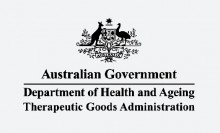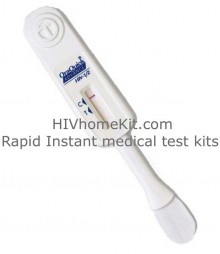
Australian consumers are unlikely to see oral HIV rapid tests on sale in the near future with the country’s regulating body, the Therapeutic Goods Administration (TGA), saying by law it is not allowed to evaluate applications to supply HIV home test kits.
At the same time Levinia Crooks, chief executive of the Australasian Society for HIV Management, says that while the OraQuick rapid HIV instant test kit by OraSure Technologies is relatively easy to self-administer, it is not a highly sensitive test.
Earlier this week the US-FDA approved the OraQuick rapid HIV instant test kit for over-the-counter (OTC) sales in the USA, despite researchers finding that in home HIV testing use the oral HIV rapid tests returned a Specificity of 99.98 percent (the proportion of negatives which are correctly identified), while Sensitivity was 92 percent (the proportion of actual positives which are correctly identified). (Ed: The HIV Home Kit rapid HIV Home test kit uses whole blood from a finger prick and has a Specificity of 99.97 percent and a Sensitivity of 99.6 percent).
What this means is that one person in 5,000 will get a false negative test, while about one person in 12 could get a false positive result from using OraQuick oral HIV rapid tests.
Oral HIV rapid tests not as accurate as finger prick blood tests

Oral HIV rapid tests not up to the standard of of rapid HIV instant test kits that use a finger prick of blood – Levinia Crooks, chief executive of the Australasian Society for HIV Management.
Ms Crooks told the Australian ABC “with an oral test, there can be quite a considerable delay between when the person’s infected and when that infection will be detectable by the [oral HIV] test.
“In looking at the tests for use at point-of-care in Australia, we’ve been focusing on tests that use finger-prick blood rather than an oral sample because the oral sample tests just aren’t up to the same standard”, she said.
While no rapid HIV instant test kits are approved for home HIV testing in Australia, this is due to legislative reasons rather than HIV rapid test kit quality issues.
According to Ms Crooks “there aren’t any [home-testing kits] legally on the market in Australia and it’s against the law in Australia to do home testing of infectious diseases.
“It’s largely a historical position around wanting to make sure that those sorts of diagnostics were done in a controlled manner.
“If somebody’s testing themselves, they’re not really in a position – well many people won’t be in a position to equip themselves on how to deal with a result if it is positive”, she said.
Source: Australia ABC: Home HIV tests unlikely to hit Aussie shelves
Subscribe to HIV Home Kit News by Email
HIV Home Kit rapid home HIV instant tests are a double antigen sandwich immunoassay one step in vitro screening test using colloidal gold conjugated recombinant antigens that provide qualitative detection of HIV infection (HIV I & HIV II antibodies) in human blood.
Contact us for more information on HIV Home Kit rapid home HIV blood test kits
Disclaimer: HIV Home Kit rapid home HIV instant test kits provide a screening analysis only. Diagnosis should not be based on a single HIV instant test result, but only after additional clinical and laboratory HIV blood test have been evaluated.
US-FDA • OraQuick • rapid HIV instant test kit • OraSure Technologies • instant HIV test kit • HIV instant test • HIV self test • HIV • HIV Home Kit, Australasian Society for HIV Management, Therapeutic Goods Administration
John Le Fevre
Latest posts by John Le Fevre (see all)
- Hetrosexuals highest risk group for HIV infection in Bali - May 1, 2013
- HIV “Functional Cure” Found in Thai Red Cross Trial - March 16, 2013
- Thailand in HIV/AIDS Crisis - November 30, 2012




